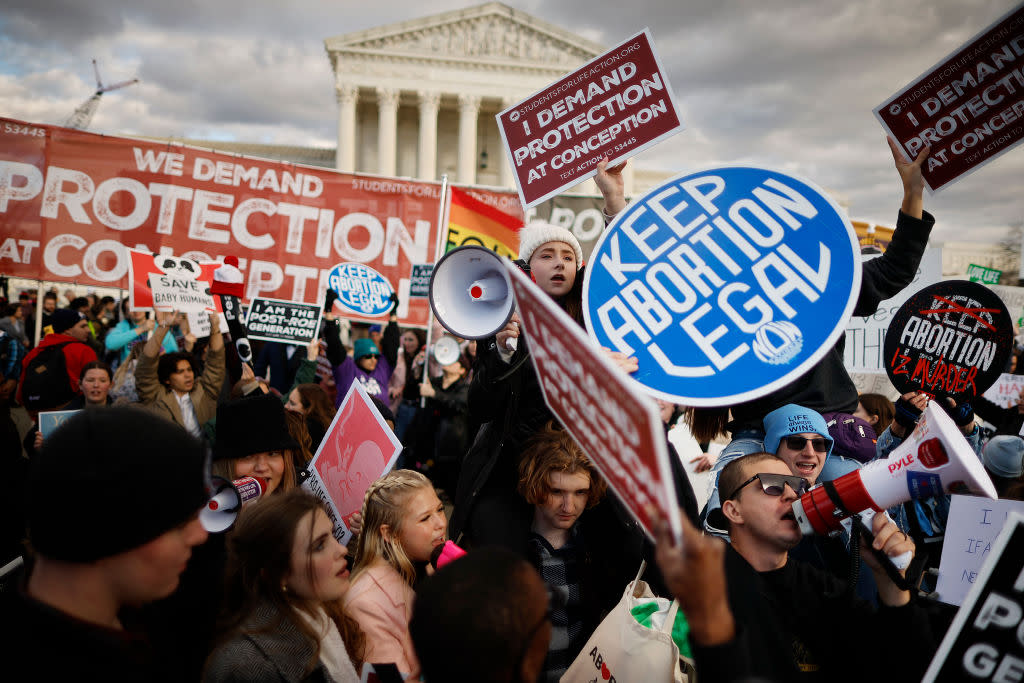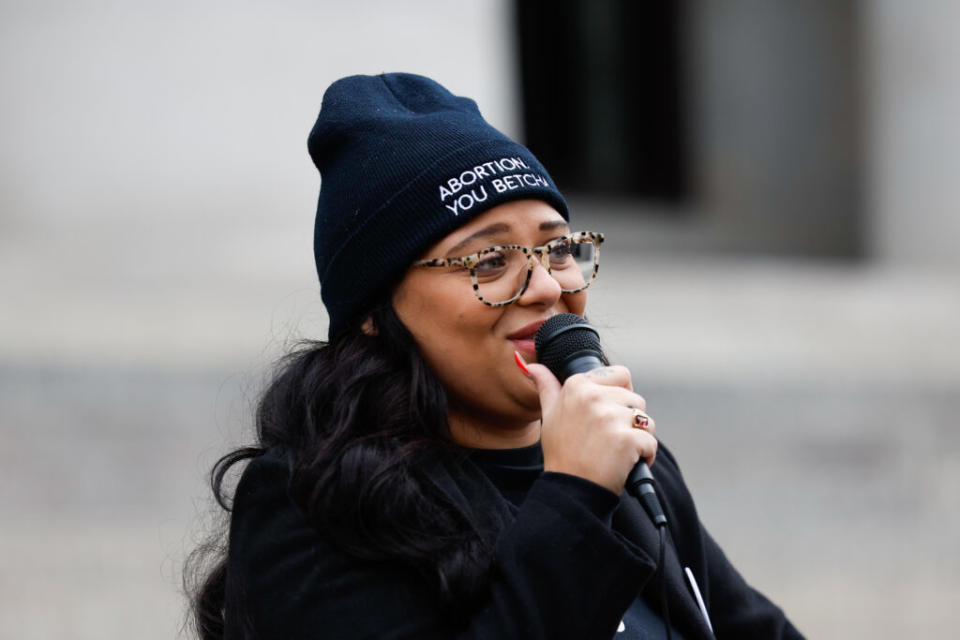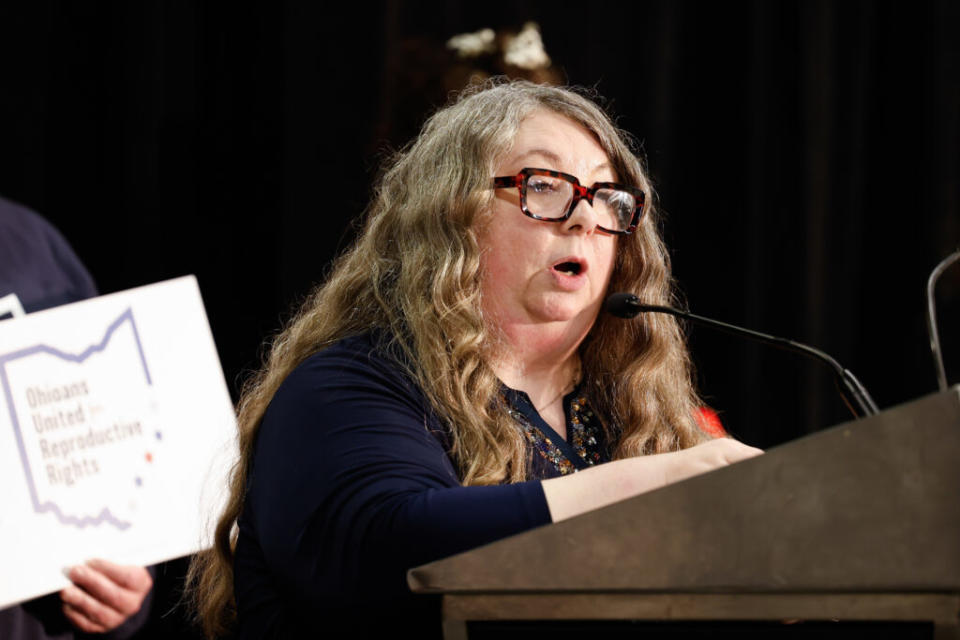Ohio abortion rights advocates embrace destigmatization of ‘abortion’ with name change

(Getty Images)
Even before the fall of Roe v. Wade in 2022, abortion rights advocates were tired of dancing around the subject.
Around that time, the group Women Have Options celebrated their 30th anniversary and, with partners in the LGBTQIA+ community and specific aims in mind, a new name was born: Abortion Fund of Ohio.
As a group with Black leadership and leadership who had received abortions, AFO board president Jordyn Close said the name change reflected a need to address and subvert “deep-seated stigma” for individuals who had had abortions, and those doing the work to advocate for abortion rights.
“It doesn’t make sense to try to fight for something or deter stigma around something while also being afraid to say what it is we’re fighting for,” Close told the Capital Journal. “We’re not going to get any closer to liberation by throwing the people that have had abortions under the bus.”
This week, another group rebranded themselves with an eye toward a specific target. Like Abortion Fund of Ohio, Pro-Choice Ohio was seen a lot during the run-up to the ballot initiative that would become the new amendment enshrining reproductive rights such as abortion into the state’s constitution. Its executive director, Kellie Copeland, was one of the speakers at the victory party on the night Issue 1 was approved by 57% of Ohio voters.
In an announcement on Thursday, the group debuted a new name: Abortion Forward, with a non-profit arm now called Abortion Forward Alliance.
“For us it’s really about taking this opportunity with the success that our coalition had making real the promise of the reproductive freedom amendment,” Copeland said. “It’s a bold new era, and we can really feel that.”
Copeland said the stigma surrounding abortion is “enabled by euphemisms,” so making a change to the advocacy group’s name makes it clear “what we’re working on and what our work is about.”
“We found that when we were talking with Ohioans … euphemisms were not needed; people weren’t shying away from having the conversation about abortion, and I think it’s very important for people to be direct,” Copeland said.
It’s a change in the reproductive rights movement that Close said is happening in a lot of other movements as well: shirking subtleties and driving home the message with the name, along with the action.
While normalizing the use of the word is a form of progress for the abortion rights movement, it’s not enough any more, according to advocates. Ohio has seen the establishment of reproductive rights in its constitution with the passage of Issue 1 last November, but it’s also seen a legislature looking to pass measures that would strengthen at least some anti-abortion messaging within state law, such as prohibiting funding that might go to those who promote or are affiliated with abortion services, including Ohio’s municipalities.
The eyes of advocates are now set on the general election, where they say implementation of Issue 1 is still vulnerable when it comes to the enforcement arm of the government: the judicial branch.
Engaging voters
With three seats on the Ohio Supreme Court bench up for grabs, Close said voter turnout is an important target of their efforts, and Copeland said spotlighting the state’s highest court as the be-all and end-all for any abortion-related litigation will be vital as they go forward.
“We are making sure that Ohioans understand that abortion is still on the ballot this year,” Copeland said.
Abortion Forward identified two other specific areas where the topic of abortion will play a pivotal role: federal elections including the presidency and Ohio’s U.S. Senate race pitting incumbent Sherrod Brown against Bernie Moreno, and efforts to reform the redistricting process in the state.
“To repeal (anti-abortion) laws would be a legislative process,” Copeland said. “But that’s not available to us right now because of gerrymandering.”
Abortion Forward’s leader said pushing for the state ballot initiative that would change the process into a citizen-led redistricting commission would undo “manufactured anti-choice legislatures.”
“The opportunity to change that, to get rid of this partisan gerrymandering once and for all and create districts are representative, that are accountable, that is going to be so important going forward,” said Copeland.
Those issues, and the potential for a federal abortion ban that could undermine the state amendment, are key points for advocates as they push for more commitment to pro-abortion moves in the state and nationally.
There is an effort on the part of abortion clinics like Ohio affiliates of Planned Parenthood and the ACLU of Ohio to try to eliminate some abortion regulations through lawsuits. A Franklin County lawsuit seeks to rid the Ohio Revised Code of a 24-hour waiting period required for abortion care and a mandatory minimum of two in-person visits with a provider before an abortion can be conducted.
In Hamilton County, a lawsuit to remove a ban on telehealth abortion services is still active, as well as separate litigation to get rid of a ban on abortions at six weeks gestation once and for all. That effort that has been in place in one form or another since the law’s enactment in 2019.
Advocates are still awaiting a decision by the U.S. Supreme Court as well, in a case that will decide whether regulations for medication abortion pills will change.
Close, who is also deputy director of the Ohio Women’s Alliance, said there has been year-round advocacy to engage voters and focus on making sure Issue 1 is implemented in the way advocates intended.
Last year, Abortion Fund of Ohio funded $1.4 million in abortion-related resources, and they continue the use of “abortion storytellers,” those who have had the experience and are able to help Ohioans through the process of finding information and services.
AFO and OWA are also using trainings and education that de-stigmatizes abortion as ways to reach and inform the public, according to Close.
“In my opinion, at this point, just saying abortion isn’t enough, we need more to maintain bodily autonomy, we need to put our bodies on the line, we need to donate and show up,” Close said.
GET THE MORNING HEADLINES DELIVERED TO YOUR INBOX SUPPORT NEWS YOU TRUST.
The post Ohio abortion rights advocates embrace destigmatization of ‘abortion’ with name change appeared first on Ohio Capital Journal.



